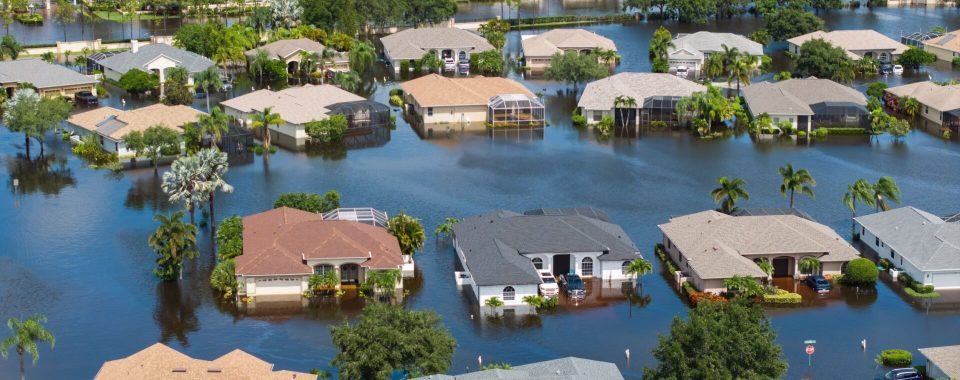An increase in catastrophic claims is just one of the many issues impacting the insurance industry and it is fairly obvious that environmental risks are escalating. Companies with a focus on social responsibility are rising to meet the challenges.
Climate change is one of the driving factors of the insurance industry’s need for change. However, this is just one piece of the puzzle in reducing losses while maintaining a satisfied customer base. It makes sense to address environmental concerns affecting the business with an environmental, social, and governance (ESG) plan. The future begins with understanding the interconnectedness of ESG and the insurance industry.
The Growing Significance of ESG in Insurance
Why is insurance ESG so important and relevant today? What role does ESG have in upcoming policy trends? Several factors go into the growing significance of ESG insurance. Some of these include:
- Climate change: Due to changing weather patterns, including more intense weather events, risk exposure intensifies. The rise in hurricanes, floods, and wildfires leads to more claims and higher amounts on the claims. It’s crucial for insurers to integrate climate data with current products and policies to reflect the current times and needs.
- Regulation and governance: It’s becoming more common for government regulators to mandate disclosure of weather-related financial risks and produce a plan outlining how they manage these risks.
- Social responsibility and inclusion: Insurers have a lot of power and responsibility. The demand for insurance corporate responsibility includes offering inclusive products combined with ethical practices. Insurers must move ahead to offer inclusion to underserved communities and promote diversity.
- Stakeholder demand: Institutional investors look for businesses with strong ESG performance and credentials. By being proactive, insurers can attract more partners and customer loyalty.
Understanding ESG and Its Relevance
With climate-related disasters almost doubling in the last several years and losses totaling more than $1 billion, insurers must step up to the plate and recognize the role of coverage and sustainability in today’s world.
Climate uncertainty is enough to propel insurers to sustainable insurance practices. However, consumer behavior indicates that adopting more environmentally friendly products is financially profitable. In fact, consumers are willing to pay more for products they deem sustainable, as well as a personalized insurance experience. Consumers will also seek out businesses that practice social responsibility. Therefore, sustainability in insurance should be a priority for those in the business.
Why Insurers Must Embrace ESG Principles
Embracing change is necessary for the future of the insurance industry. Not only is the heightened risk of climate-related claims an issue, but regulatory changes and compliance are other motivating factors driving sustainability in insurance. In the first six months of 2023, there were more than 1,700 changes to state regulations in the U.S. As you can imagine, many of these dealt with climate issues.
By adopting environmental and social responsibility in insurance, companies can gain a competitive advantage and be positioned as leaders in the field. This can provide insurers with market competitiveness. By ensuring that consumers have long-term sustainable products, insurers will be able to sustain the rapid changes in the world and maintain a strong business model.
Insurers can also do better at managing risk when they implement ESG concepts to underwriting policies and investment portfolios.
Finally, stakeholders are a crucial element of any business. Underwriting policies can support ESG goals by creating criteria that lean toward environmentally and socially responsible behavior. Some policies can be instrumental in influencing companies that produce greenhouse gas by offering better terms if they adopt strong ESG practices.

Navigating Environmental Challenges
To be proactive in the insurance industry, it’s important to think outside the box about investing strategies and the evaluation process for underwriting. Companies may find it profitable in the long run to invest in sustainable projects that help reduce the number of climate-related claims. As more green infrastructure is developed and renewable energy initiatives are promoted, the results of climate change are minimized, thus contributing to positive outcomes and financial benefits.
Insurance companies can also navigate the environmental challenges by reducing their carbon footprint and investing in businesses that do likewise. This includes determining what the company’s average carbon footprint is and working to reduce it.
Also, developing climate-resilient products is a proactive solution designed to address the risks. Companies can utilize data analytics and AI to be able to predict environmental risks and adjust policies and pricing.
Social Responsibility and the Insurance Industry
Social responsibility and the insurance industry are connected by their common role to protect. Whether it’s communities, businesses, or people, reducing risks is a leading goal. Insurers can amplify social responsibility by offering products that support underserved communities, provide help to disaster recovery goals, and invest in socially responsible projects.
Overcoming Hurdles in ESG Integration
Integrating ESG principles and policies is the first step in implementing ESG in insurance. As with any new business model, there are hurdles to overcome. Some of these include:
- Inconsistent ESG data and metrics: Because reporting standards are not uniform, it can be difficult to assess and compare risks. It is helpful to use a globally recognized framework to understand the data.
- Financial pressures: If companies only look at the short-term financial impact, they may not want to invest in ESG initiatives. However, long-term value is crucial to consider. Additionally, companies will reap the benefit of risk mitigation.
- Limited expertise: Companies may not be familiar with how to manage an ESG plan. Connecting with thought leaders in the field is a step in the right direction.
The Path Forward: Insuring a Sustainable Future
Take the path forward to ensure a sustainable future for upcoming generations. Begin by assessing climate risk data. Establishing a business strategy that integrates ESG into policies is a critical next step. Be sure to consider the various regulatory compliance issues when developing the business strategy. Integrate ESG into claims management, underwriting, and investment decisions.
Finally, offer products and coverage that incentivize sustainability and eco-friendly behavior. This encourages the sustainable future you are striving for.
It’s Time to Insure with Purpose — Let Confie Show You How
Now that you understand a bit more about the future of ESG in insurance, take the lead and pave the way to a more environmentally friendly future. Join one of the largest and most respected personal lines distributors in the United States. Confie is here to provide leadership and guidance to our insurance partners. Find out more information by contacting us online or calling (714) 252‑2500.


